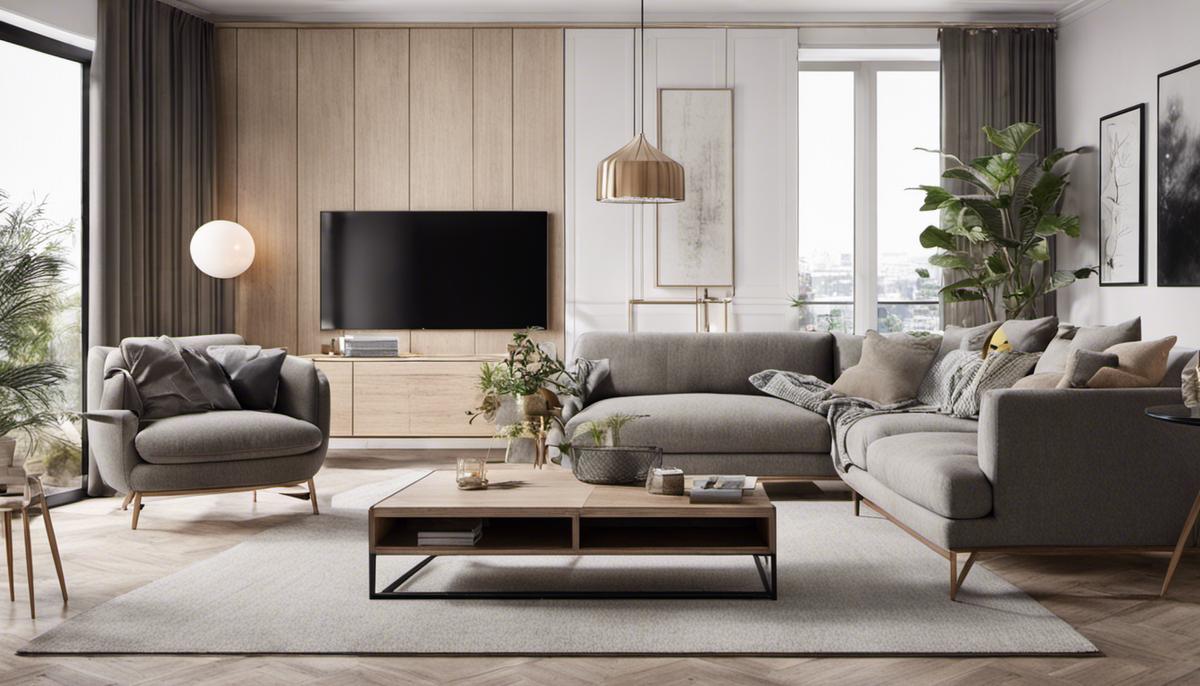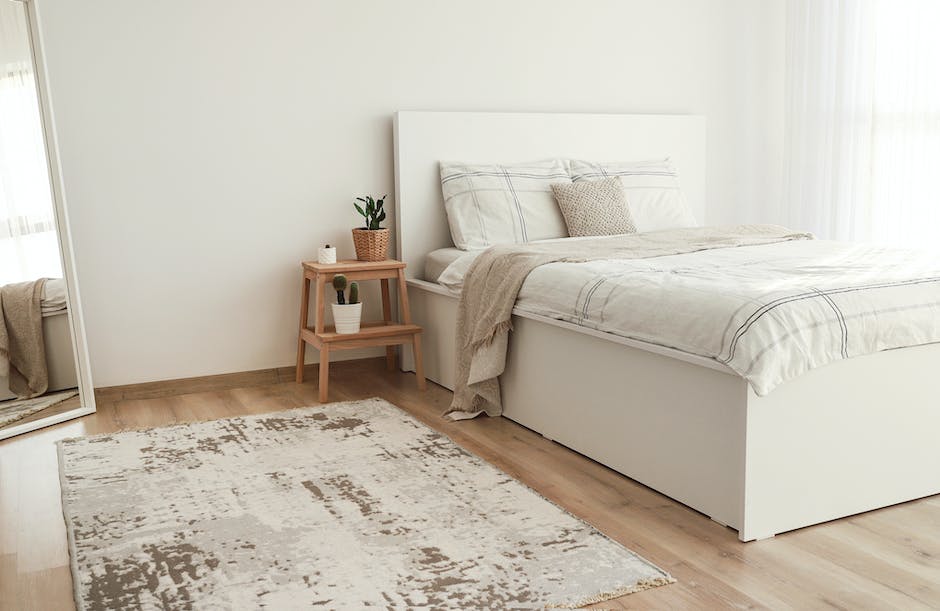Scandi living room decor captures the essence of Scandinavia’s timeless charm, offering a perfect blend of simplicity, functionality, and elegance. This decor style is more than just a trend; it is a design philosophy that is centered on improving daily life through peaceful, comfortable, and well-organized interiors. With roots grounded in the Nordic region’s unique geography and cultural history, Scandi style emphasizes minimalist forms, natural materials, and a clean, muted color palette. Whether you’re planning a major renovation or simply seeking a minimalist update for your living space, this article shines light on the Scandi design concept, offers a wealth of practical styling tips, and shares real-world inspiration to help you create your very own Scandi-style living room.
Understanding the Scandi Design
Understanding the Scandi Design
Scandinavian design, also known as Scandi design, is a design movement that originated in the Nordic region in the mid-20th century. It’s characterized by simplicity, functionality, and minimalism, taking inspiration from the natural beauty of the Scandinavian landscape. The focus on functionality in Scandi design reflects the Nordic belief that good design enhances everyday life.
One of the defining features of Scandi design is its understated aesthetic. It retains a clean, uncluttered look with a focus on natural materials and craftsmanship. The furniture in Scandi interior design is often made from light-colored wood and has streamlined, minimalist shapes.

Color Palette
The Scandi color palette tends to be neutral and soothing with whites, greys, blacks, and browns often being used. But it’s not limited to these shades. Pops of color are often introduced through accessories or artwork. These accent colors often echo the hues found in the natural Scandinavian environment, such as green from the forests and blue from the sea.
Functionality and Comfort
In the Scandi design, functionality doesn’t come at the cost of comfort or aesthetics. Comfortable furniture with clean lines, soft textiles, and cozy accessories are all integral parts of a Scandinavian living room. The emphasis is on creating a livable space that’s also visually pleasing. The furniture is often designed to serve multiple purposes, reflecting the Scandinavian belief in smart, rational use of space.
Adding cozy elements like plush rugs, throws, and cushions helps add warmth to the minimalist aesthetic of Scandi design, creating a space that’s inviting and comfortable.
Influence on Modern Decor
Scandi design has had a significant impact on modern decor. Its influence can be seen in the popularity of minimalism in interior design, with its emphasis on clean lines, clutter-free spaces, and a neutral color palette. The trend towards open plan living and multi-functional furniture are also reflected in Scandi design principles.
Bringing Scandi Aesthetics Into Your Living Room
Investing in Scandi-style aesthetics can be a great way to refresh your living room. Begin by simplifying and decluttering your space– a pristine, organized room is a key principle of Scandi design. Once this is complete, brainstorm your color palette. A neutral base with tastefully selected spurts of color, showcased through accessories and ornaments, is a classic approach.
Select furniture that encapslices minimalistic grace and sleek lines, characteristically associated with Scandi style. Pieces crafted from natural materials, predominantly light wood, will accentuate this aesthetic perfectly. Do not underestimate the potential of plush textiles either – soft cushions, luxurious throws and pleasant area rugs can inject a lovely touch of comfort.
Lastly, infuse natural elements into your decor. Utilize indoor plants, elements of wood or natural stone, or any form of artwork inspired by Mother Earth to bring an air of serene Scandi tranquility to your living room.

Scandi-Styled Living Room Tips
Unraveling the Elements of Scandi Style
Scandi style, also known as Scandinavian, references a type of interior design that thrives on simplicity, functionality and minimalism. With roots in Nordic nations such as Sweden, Denmark, and Norway, this method accentuates clean lines, muted tones, natural materials, and simultaneously delivers a welcoming but spacious environment. It encapsulates a minimalist aesthetic that is not only comfortable but also easy to upkeep, perfect for any living room. Plus, it encourages a clutter-free sanctuary characterized by light, serenity, and tranquility.
Pick a Neutral Color Scheme
A key element to Scandi style is a neutral color palette. Whites, grays, blacks and browns are often interwoven creating a clean and calming look. However, you can also incorporate subtle accents of colors found in nature such as muted blues or greens. Walls should typically remain white to help promote a feeling of brightness and space, but feel free to explore nuances like off-white or light gray.
Incorporating Natural Elements
To recreate a Scandinavian feel in your living room, incorporating natural elements is crucial. Wood, in particular, is often used in Scandi design. Consider options such as a wood-paneled wall, wooden furniture pieces, or accents like picture frames. Wool or cotton fabrics are perfect for adding coziness and warmth. Houseplants or nature-inspired artwork can provide a soft, calming touch to your living space.
Choosing Scandi-Styled Furniture
The Scandi style promotes clean lines and functionality, this applies to furniture choices as well. Furniture pieces should possess a simple, understated aesthetic while also being comfortable and practical. A classic modernist chair, for instance, is perfectly at home in a Scandi styled room. A mix of vintage and contemporary items can work well, ensuring a balance between the classic and modern feel.
Lighting and Accessories for a Scandi Living Room
Lighting is crucial in Scandi design, aiming to recreate the bright but soothing light of a Scandinavian summer’s day. Rely on natural daylight as much as possible, and lean on simple, stylish fixtures for the evening hours. Pillows and throws in soothing, neutral hues can add cosiness to your room, as can ceramics in earthy tones. Angular lamps, minimalist clocks, softly-draped throws and block-printed cushions all serve to enhance the Scandi vibe.
Pay Attention to Details
One of the unique features of Scandi style is that even the accessories have a functional aspect. Look for bins, trays and baskets that are useful while being pleasing to the eye. This helps to maintain the orderly, clean feel that Scandi style calls for. Try to avoid clutter, and remember, stay minimalist!
Incorporating Hygge into Your Living Room
“Hygge” is a Danish word that refers to a feeling of coziness, comfort and well-being. You can incorporate hygge into your living room by adding candles, which are famously used in nearly every Danish household. The Danish believe that these create a comforting, warm glow that other forms of lighting simply can’t replicate. Soft, plush rugs, throw blankets, pillows and a comfortable sofa can also promote a greater sense of hygge.
Understanding Scandi Style
Scandi style predominantly lays emphasis on simplicity, comfort, and functionality. It’s all about creating a tranquil and inviting environment that fosters relaxation and well-being. Whether you’re looking to subtly incorporate elements or plan a comprehensive makeover of your living space, adopting Scandi style is an influential design approach with enduring charm.

Real Life Scandi Inspiration
The Appeal of Scandinavian-styled Living Rooms
Dubbed as ‘Scandi,’ living rooms embracing the Scandinavian style grab attention for their minimalistic yet functional approach and the aesthetic appeal drawn from simplistic designs. This popular interior styling has gained worldwide attraction for its smooth, clean lines, incorporation of natural elements, use of subdued colors, and an exceptional mix of textures.
Origin and Key Attributes of Scandi Decor
Scandi decor style originated from the Nordic countries where inhabitants had to maximize natural light during the short, dark winter days. It brings together themes of comfort and warmth while maintaining a clean, light, and airy aesthetic. Key attributes of this style include a monochromatic color scheme with white walls, light-colored wooden floors, and functional furniture pieces with modern clean lines.
Functionalism and Natural Elements
Functionalism is a key tenet of Scandi decor, and each item in the living room should embody purpose and functionality. Furniture is often raised on legs to enhance the sense of space and allow for easy cleaning. The inclusion of natural elements like soft leather, sheepskins, and chunky knits complement the clean lines and add textural contrast to the Scandi room.
Examples of Successful Scandi-styled Living Rooms
One great example of a successfully executed Scandi-styled living room is Gwyneth Paltrow’s Amagansett home. This space demonstrates how a modern and minimalist palette can be enriched with textural elements to create a warm and inviting environment. The living room features an all-white color scheme, accented with soft grey furnishings and light wooden elements.
In a different approach to Scandi design, actress, and influencer Shay Mitchell’s home incorporates deeper tones while maintaining the minimalistic aesthetic. A largely black and white palette sees the addition of earthy color accents such as terracotta and amber, making the space feel grounded and cozy. Bold graphical elements and nature-inspired textures bring a unique touch to the overall Nordic theme, illustrating that the Scandi style can be adapted to personal preferences while maintaining core principles.
Scandi Style in Public Spaces
The Scandi trend is also spilling into public spaces, notably hip coffee shops and eateries. A fine example is the “Happy Bones” coffee shop in New York City. It’s famous for its simplicity, high Ceilings, and clean lines that offer a relaxed environment while contributing to its functionality.
Beautifully Implemented Scandi Living Rooms by Ordinary Individuals
Beside celebrity homes and trendy cafes, there are numerous examples of beautifully implemented Scandi living rooms by ordinary individuals. A notable example is seen on Pinterest user Jules Carpenter, who refreshed her mundane living room into an appealing, minimalistic Nordic space. By incorporating white walls, light wooden floors, simple modern furniture, and plants, she was able to replicate the serene and harmonious atmosphere that Scandi designs encapsulate.
Flexibility and Personalization of Scandi Style
By examining these real-life Scandi inspirations, it’s clear that the style provides enormous flexibility for personalization whilst retaining its core qualities. Remember, the key to achieving this aesthetic balance is combining simplicity and utility with elements that add warmth and texture to your living room space.

Creating a Scandi-style living room isn’t about strictly following a rule book, but sourcing inspiration from Nordic designs and interpreting them in a way that suits your personal aesthetics and lifestyle. The design tips and real-world examples given help navigate the journey towards a simpler, more comfortable, and elegant Scandi-style living room. As with any design endeavour, remember to enjoy the process, celebrate your individuality, and bring in elements that speak to you personally. So, let the clean lines, muted colors, and minimalist beauty of Scandi decor transform your living space into a serene sanctuary that embodies the core Scandinavian values of hygge (coziness) and lagom (balance).








Leave a Reply